Arguably the most hotly anticipated derby in the Premier League is finally upon us. Tottenham Hotspur take the short trip to the Emirates Stadium – home to their arch-rivals – Arsenal. The two north London teams square off and the match promises to be the match of the weekend.
With three matches played already, Arsenal are currently third in the league behind Liverpool and Manchester City. Indeed, they’ve had a stronger start to the season compared to Spurs and Mauricio Pochettino would like to get back onto his feet as soon as possible. In this tactical analysis, we’ll try to provide an in-depth overview of the tactics which might be on display when the two teams face off on Sunday.
Formations
Up until this point in the season, both teams have used the 4-2-3-1 and the 4-3-1-2. Spurs used the 4-3-1-2 against Aston Villa in their season opener but found no joy. They switched to the 4-2-3-1 with Christian Eriksen coming in and have stuck to that since. Arsenal, on the other hand, used the 4-2-3-1 against Burnley and Newcastle United but Emery switched to the diamond for the match against Liverpool in an attempt to better protect the central zones.
At any rate, both teams have their own versions of the apparently similar structure and we’ll discuss that in the analysis below.
Spurs: To press or not to press
Last season, Spurs registered the second-highest PPDA values per 90 in the league. However, they were also second when considering only matches played away from home. What this means is that they usually press high up the pitch regardless of the venue.
This season, with the addition of Tanguy Ndombele and Giovani Lo Celso to midfield, means two things – while they’ll look to keep possession more than ever before but they’ll also be much more suited to winning the ball higher up the pitch due to their more advanced set-up.
Having said all that, it’s still expected that Arsenal will dominate the majority of the proceedings at the Emirates. It’s hence a question to consider whether Spurs will press higher up the pitch during goal-kicks or will they be content to settle in their own half.
I expect Spurs to do the latter. Emery has made it a point to try and instil in his players the mentality to play out from the back regardless of the opposition and especially at home games. With that the case, Spurs might try to counter that using their 4-2-4 press.
We’ve not had an opportunity to see what kind of a pressing strategy Pochettino has in mind this season. In the three matches played so far, Spurs have either not had to press at all (against Aston Villa and Newcastle United) or they’ve opted to sit in a mid-block (against Manchester City).
However, in the second half of the match against City, we noticed some form of a plan to pressure and disrupt the opposition’s build-up from deep. However, the plan was far from cohesive as can be seen below. The most obvious issue is the gaps between the lines of the press. The midfielders have not moved up to support the press and neither has the defensive line moved up to compress the space. This makes it easy enough for City to break the press with a straight pass to Ilkay Gundogan who lays it off first time to Zinchenko.
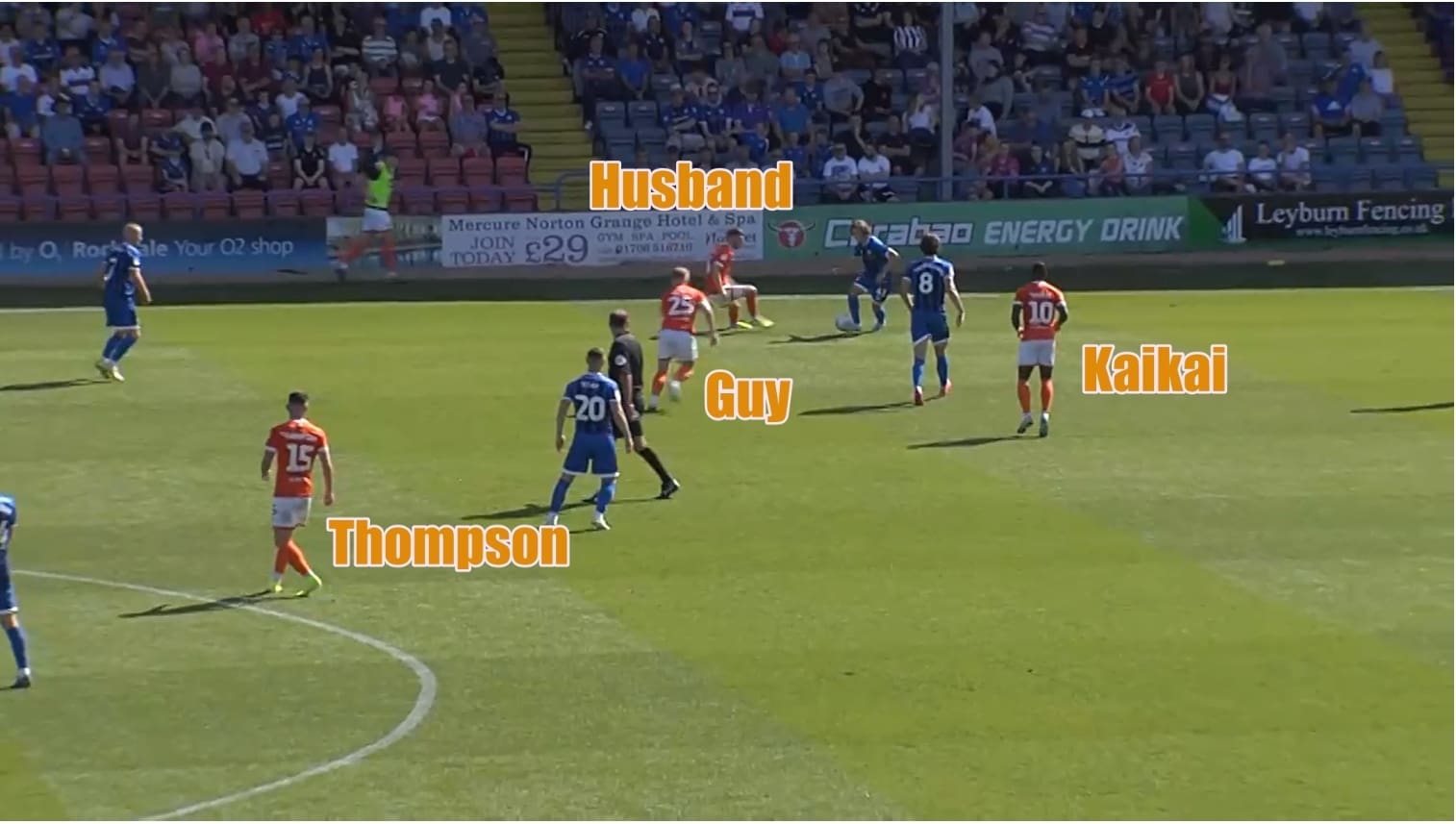
Against Arsenal – a team much closer in quality than City or Aston Villa – Spurs might try a more organised pressing strategy.
Spurs: out-of-possession
Spurs may or may not press but they’ll definitely stay out of possession, probably for the longer duration of the match. Off-the-ball, they usually set themselves in a 4-2-3-1 mid-block. The focus is on maintaining four different levels of staggering to ensure that spaces are not afforded centrally. At times, the structure turns into a 4-4-2 block, when the opposition enters their half.
Pochettino sets up his team in a way which counteracts the opposition’s strengths. Against City, for example, he used Erik Lamela to man-mark Rodri very tight so as to ensure he wasn’t instrumental in ball-progression. However, Arsenal almost always plays a double pivot and hence only marking one of the midfielders wouldn’t be enough. I’d expect the #10 to mark one of the deeper midfielders while Kane uses his cover-shadow to block the passing lane into the other midfielder and force the ball out wide to the full-backs.
Notice in the image below how Lamela being touch-tight on Rodri triggers Zinchenko to invert inside and receive with time and space to eventually pick out a long pass to Sterling. Arsenal also play with two deeper central midfielders and hence, this is relevant to Pochettino if he’s to stop Arsenal’s ball-progression from deep.
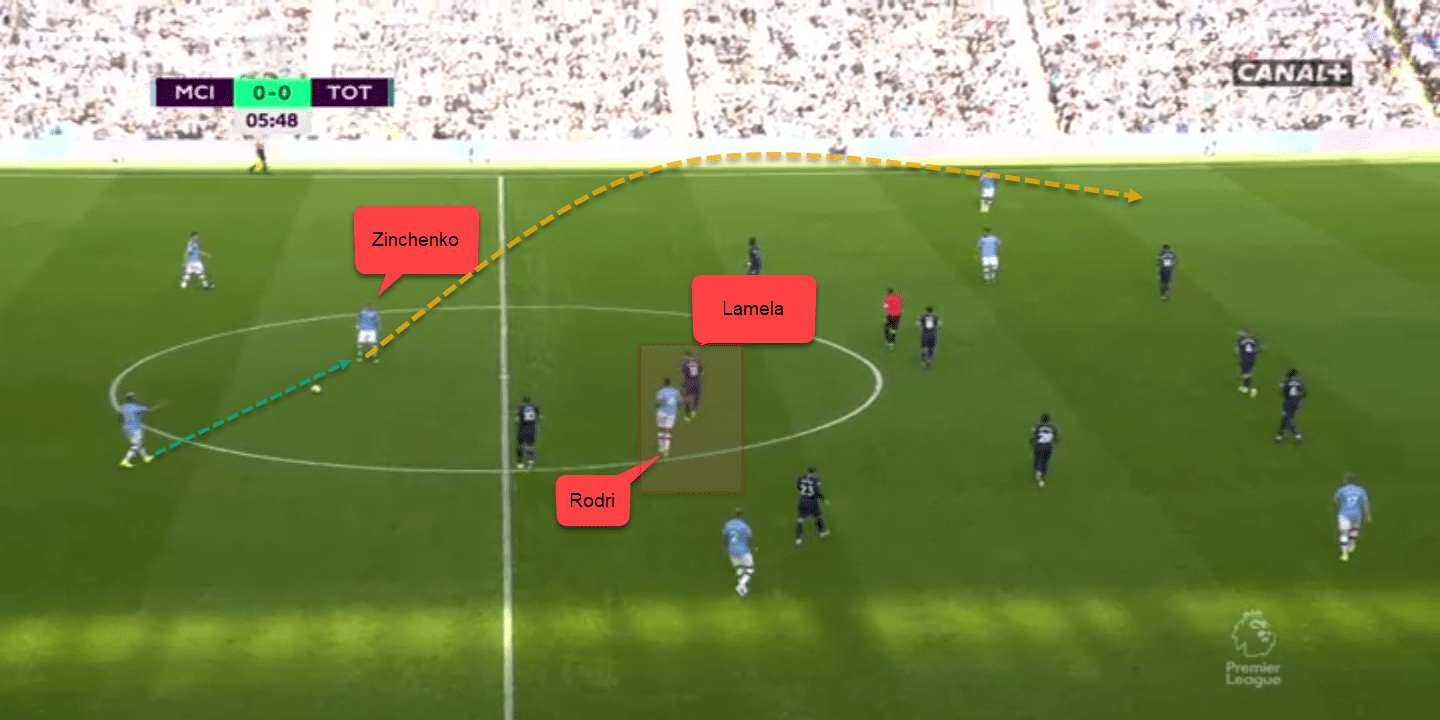
Another aspect of Tottenham’s mid-block is the space afforded out wide. Like mentioned before, they try to compress space centrally and force opponents out wide. They very seldom move into a flat midfield line as that’s easier to bypass.
When the opponent plays the ball to any one side, the entire block shifts to that side. This includes the winger as well who drifts infield. Notice in this throw-in sequence from their league match against Newcastle United how Lamela moves centrally. This opens up the entire flank for Newcastle to exploit if they can switch the play successfully.
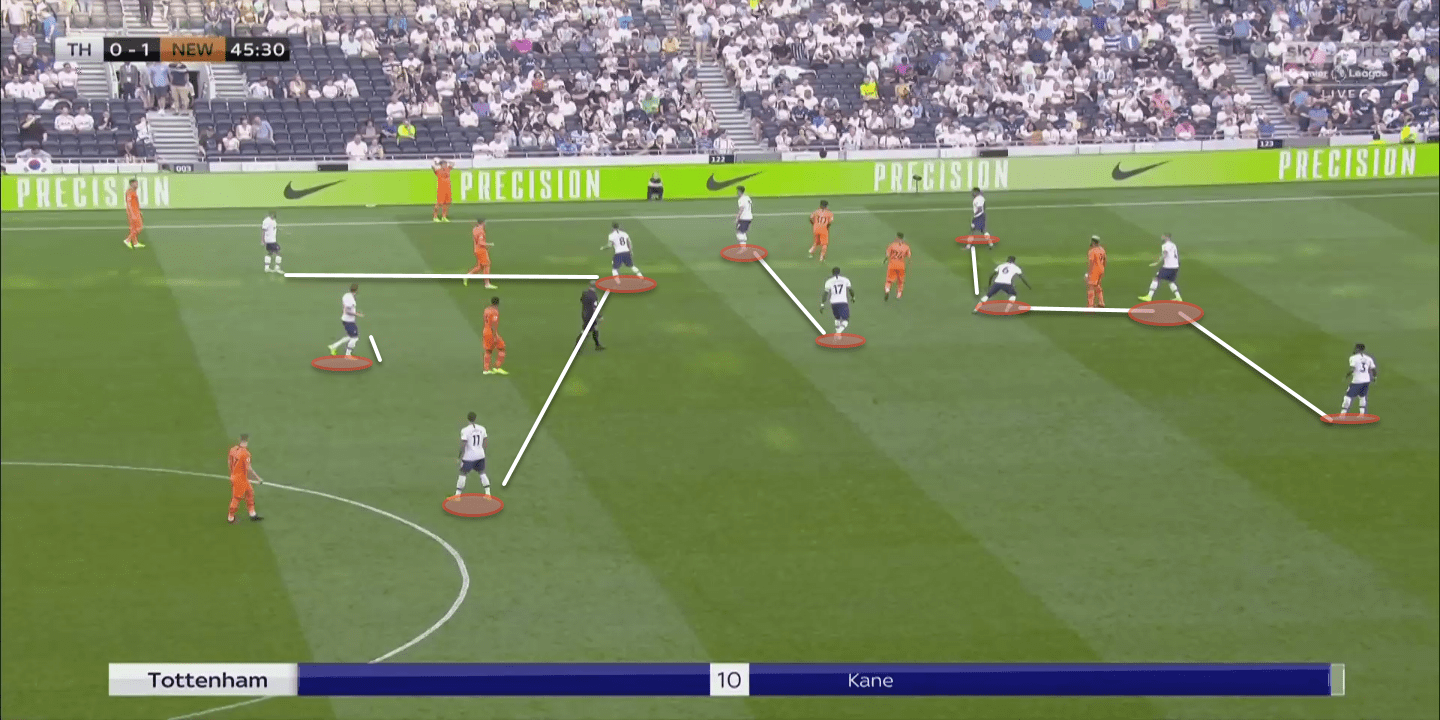
Arsenal love a good wide combination and this will be something Pochettino will surely be aware of. He might opt for a flatter structure to ensure more horizontal coverage of the pitch and ensure Arsenal’s wingers and full-backs don’t get the space to combine and isolate his full-backs.
Spurs – Offense
Spurs are a very well-balanced side, capable of executing a host of different mechanisms. They are a much more versatile side this season and have a variety of little tactical nuances they switch around in the matches to get the best out of their personnel. They still haven’t clicked altogether – and Emery should try to take full advantage of that.
In their most common 4-2-3-1, the wingers take up traditional wide positions and try to open up the passing lane from their full-backs. The full-backs are supported by the deeper midfielders. This can be seen below – notice the general structure. Wingers wide, full-backs moving infield and the attacking midfielder and striker playing off each other.
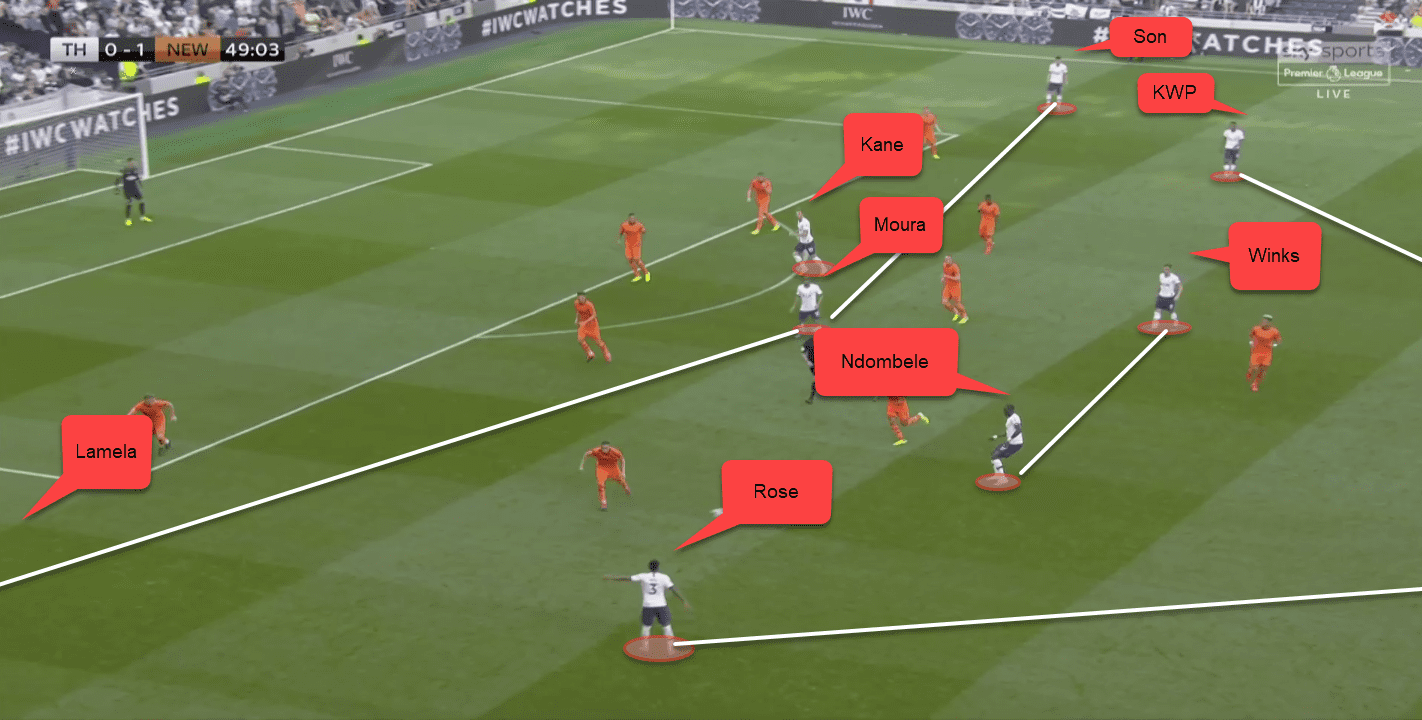
Perhaps the greatest strength of Tottenham is the versatility of the players. This lends to whatever tactical adjustments Pochettino might try to make in-game. For instance, the full-backs might often invert to open up the passing lanes to the wingers and be in a better position to quickly receive from the centre-backs. This requires fullbacks who’re comfortable playing in the half-spaces and are technical enough as well as have a good degree of spatial awareness. Dani Rose and Kyle-Walker Peters fit these roles perfectly.
The forwards also interchange positions a lot. Erik Lamela can play as a winger as well as in the #10 role. Kane is adept at dropping into the channels to receive and turn with the ball. Lucas Moura is also similarly comfortable with the ball at his feet and his back to the goal. Son Heung-min is adept at making runs behind the back-line as well as instrumental during transitions.
Notice in the image below a direct contrast to the image above. In the previous image the wingers stayed wide and tried to pull the opposition block. This from the same match shows how the wingers have now all moved in-between the lines to overload the central areas and collapse the opposition block inwards. This high degree of tactical flexibility is partly due to Pochettino’s tactics but also due to the characteristics of the players themselves.
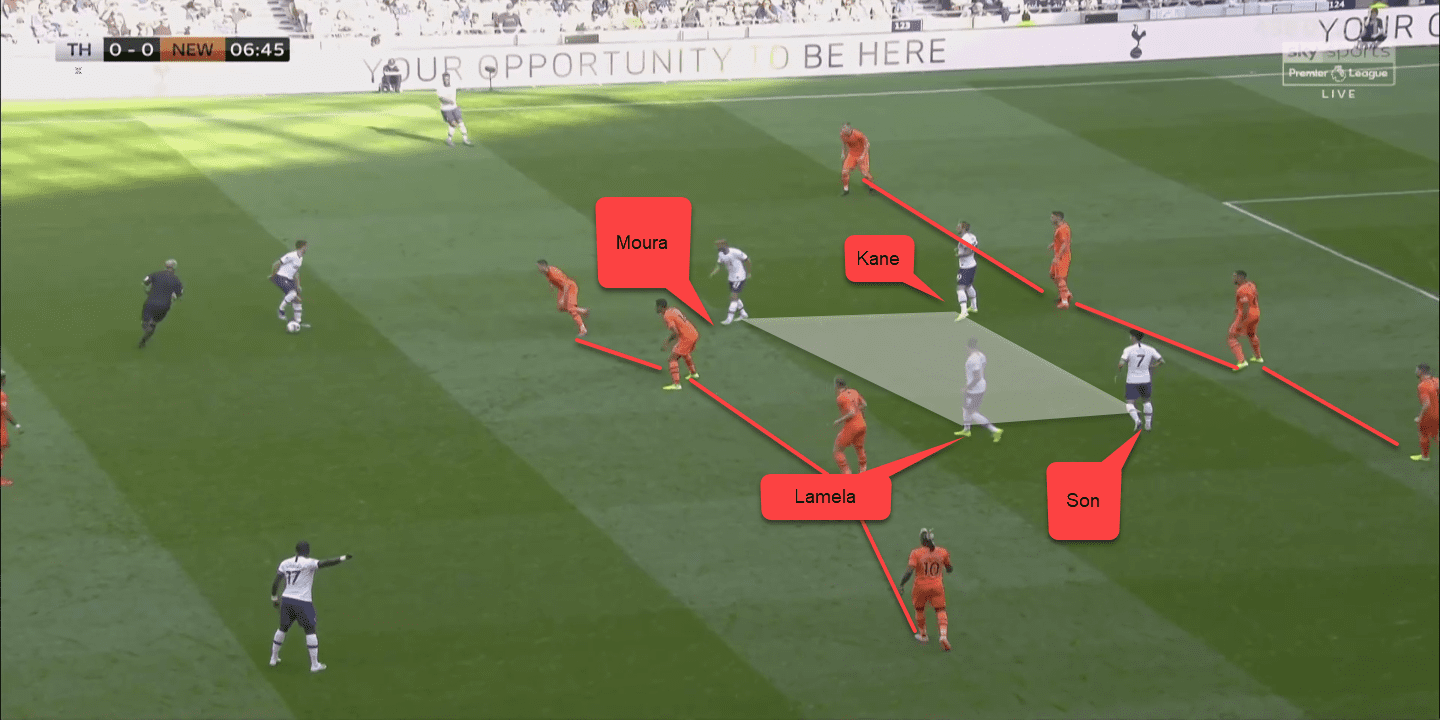
Arsenal – the case for and against the diamond
Arsenal might either line up in a 4-2-3-1 or a 4-4-2 diamond. The diamond was what they played against Liverpool last week. However, the diamond was what they also employed during the last north London derby at the Emirates from the 2018/19 season. One has been chalked up as a disaster and the other once brought about one of the best Arsenal performances under Emery.
If the diamond is to be used again, Emery must be a lot more cautious. In the last match against Liverpool, they ended up conceding fifteen shots in the first half alone.
The issue with the diamond is that it’s a very narrow formation. While that does indeed protect the centre, as we’ve seen above, Tottenham like to double up on the flanks with their wingers hugging the touchline. This will most certainly be an issue as that will expose Arsenal’s fullbacks since there are no natural wingers in the formation. They’ll also be very vulnerable to switches of play for the same reason.
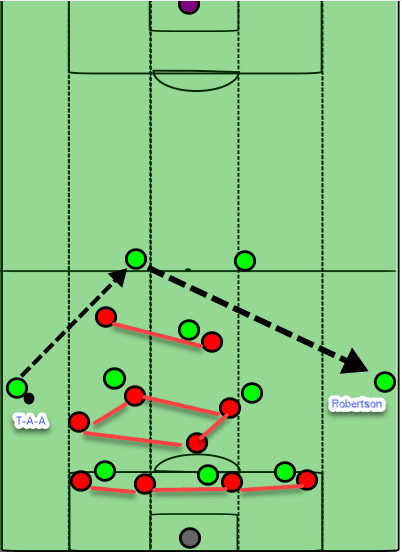
The case for the diamond is also compelling. Arsenal’s best home displays from the 2018/19 season were all when they started with a midfield diamond or they moved into one later on. The matches in case are against Chelsea at home, against Liverpool at home and against Tottenham at home. These matches were marked by excellent pressing, forcing turnovers higher up the pitch and then using those turnovers to create chances. Below is an instance of the set-up from the match against Chelsea.
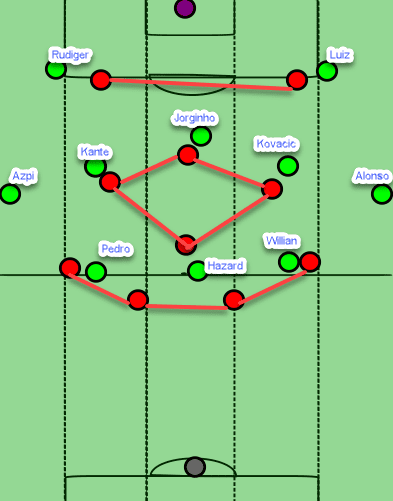
Keep in mind that there are no issues with pressing in a 4-2-3-1 scheme (or any other for that matter). It will be genuinely interesting to see what Emery comes up with and how that pans out. I expect a high-pressing 4-2-3-1 to mirror Spurs’ formation.
Arsenal’s 4-2-3-1 vs Spurs’
Although similar on paper, there are certain tactical differences that become apparent during possession phases. The most obvious difference between the two teams is that of the positioning of the deeper midfielders. Harry Winks and Ndombele play much wider. They tend to support their full-backs and help them in ball-circulation. This can be seen below. Notice how both are in a position to receive passes back from the full-backs and recycle possession to the other side.
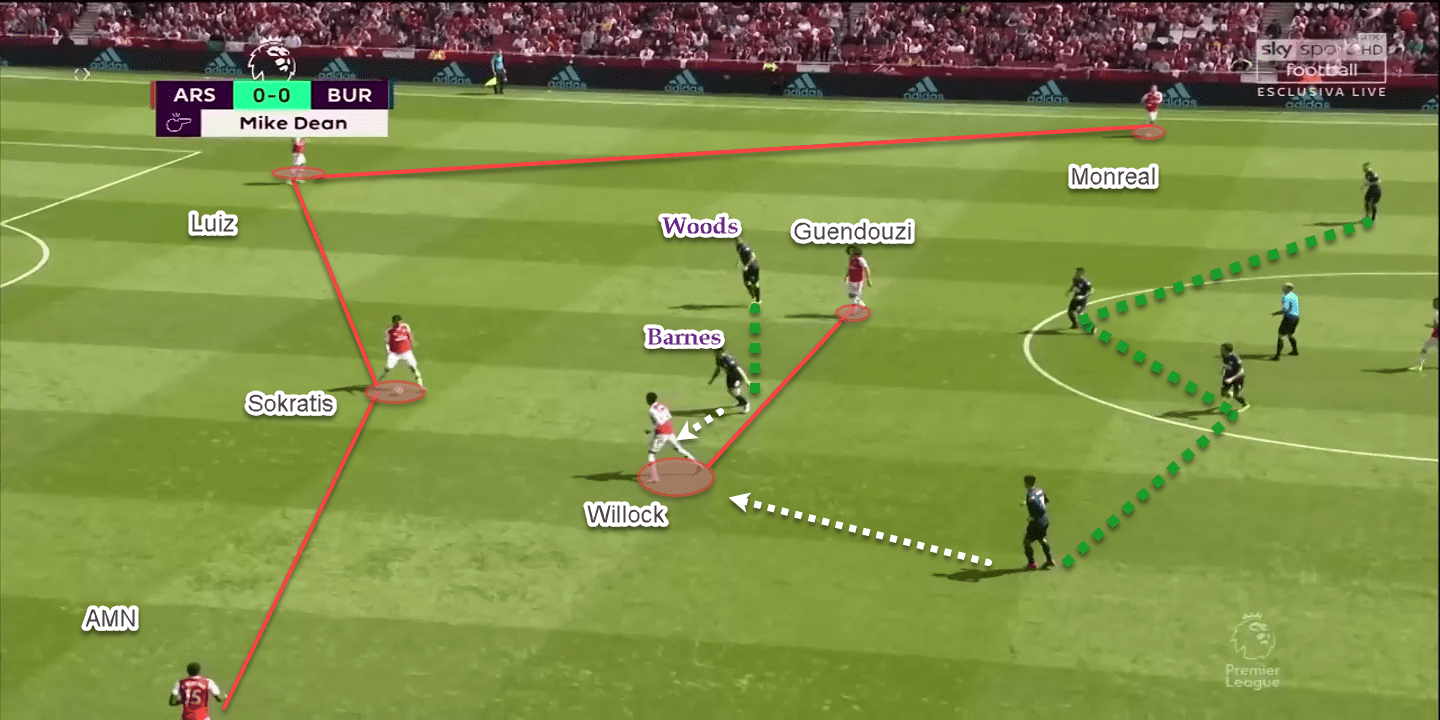
With Arsenal, the pivot doesn’t break so easily. They stay very narrow and support each other. They also draw the opposition’s press narrow and that opens up space for the fullbacks to move up higher and receive from the centre-backs.
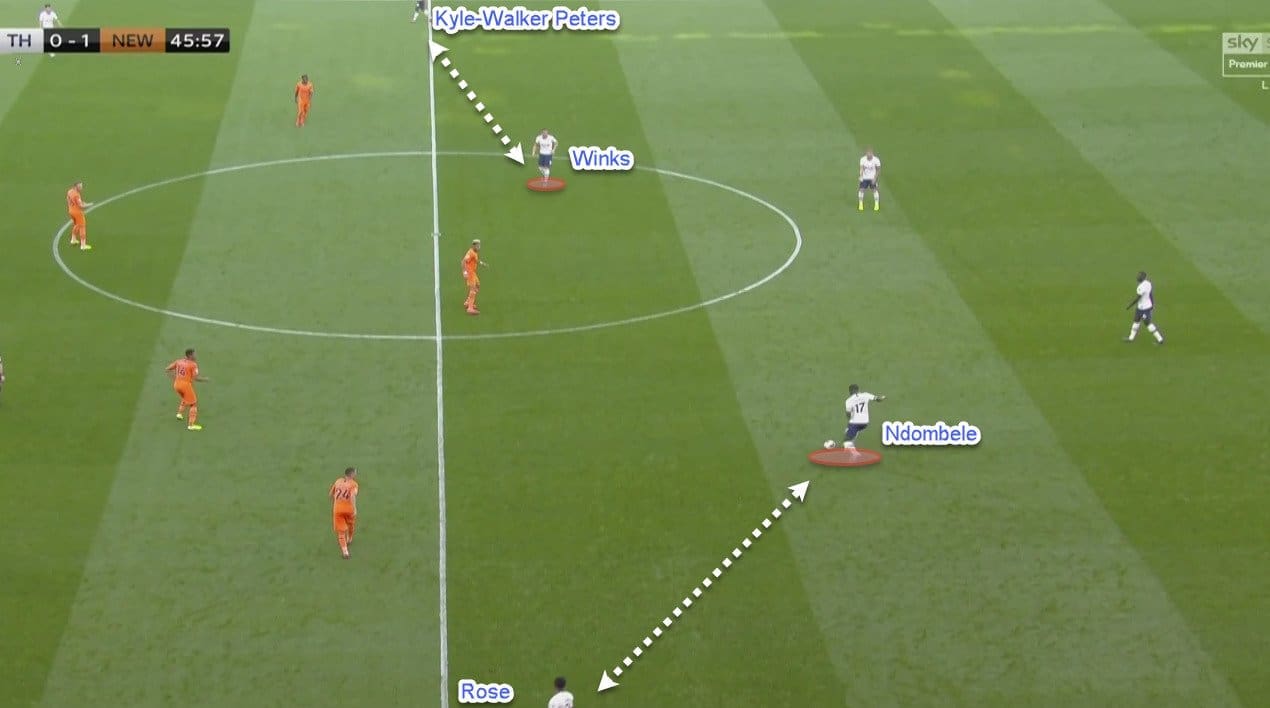
Another positional difference is that while Tottenham play with very wide wingers and inverting full-backs, Arsenal usually try to get their forwards to drift inside and pin the opposition fullbacks. This allows them to create space for the fullbacks to overlap and join the attack.
Conclusion
The North London derby promises to be a tense, open affair – as it almost always is. Very few matches which generate so much hype also end up producing insightful tactical clashes and this one’s surely set up to be one. It will be a must-watch for fans and neutrals alike. Both managers have their own reasons to win. This match is more than just about the three points, the bragging rights are also in the balance.

If you love tactical analysis, then you’ll love the digital magazines from totalfootballanalysis.com – a guaranteed 100+ pages of pure tactical analysis covering topics from the Premier League, Serie A, La Liga, Bundesliga and many, many more. Buy your copy of the August issue for just ₤4.99 here.

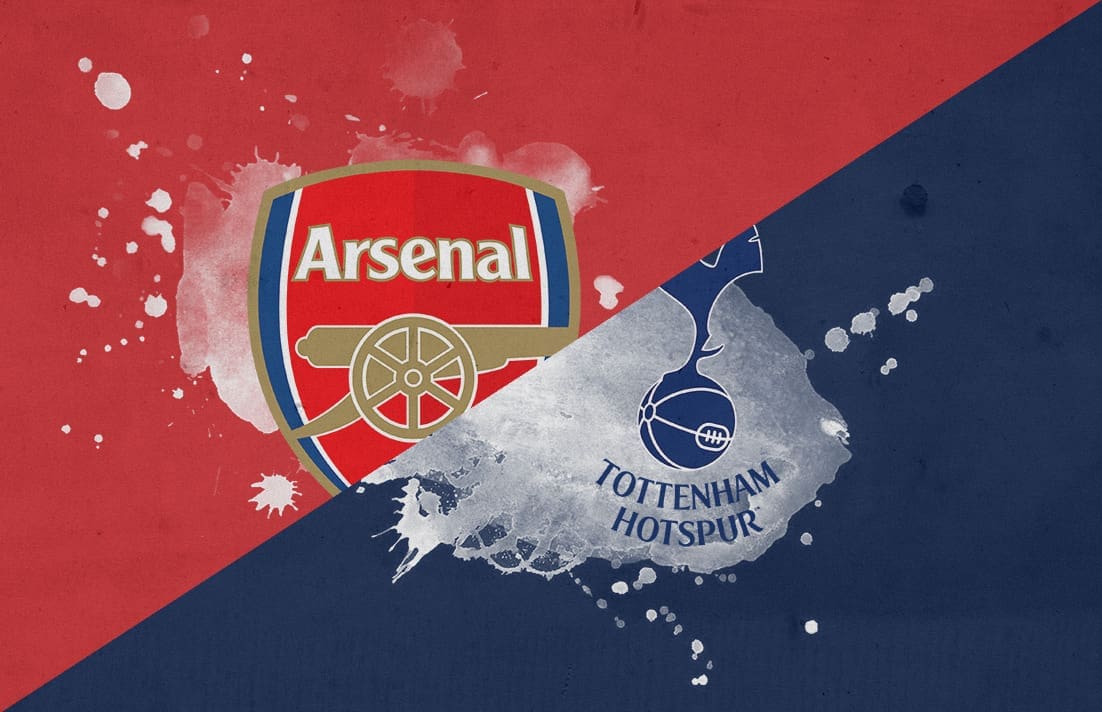




Comments